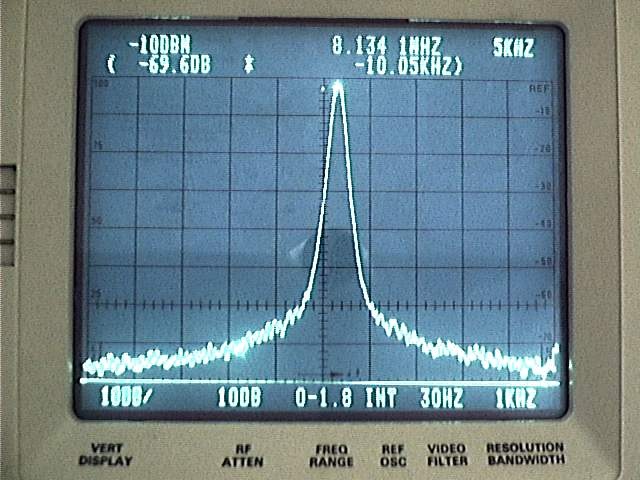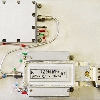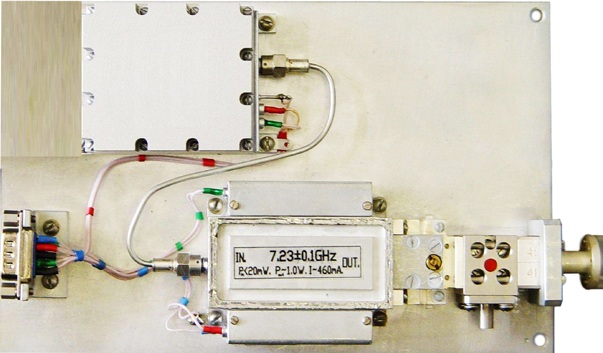Specifications
| Model Number | ISMA -28 | ISMA -22 | ISMA -19 | ISMA -15 | ISMA -12 | ISMA -10 | ISMA -08 | ISMA -06 |
| Frequency Band | Ka | Q | U | V | E | W | F | D |
| Frequency Range, GHz | 26,5-40 | 33-50 | 40-60 | 50-75 | 60-90 | 75-110 | 90-140 | 110-180 |
| Maximum Power Output, mW* | 150 | 150 | 120 | 100 | 50 | 30-50 | 15-30 | 10-20 |
| DC Power, V/A | +12/0.6 | +12/0.6 | +12/0.6 | +12/0.2 | +12/0.6 | +12/0.6 | +12/0.6 | +12/0.6 |
| -12/0.01 | -12/0.01 | -12/0.01 | -12/0.01 | -12/0.01 | -12/0.01 | -12/0.01 | -12/0.01 | |
| +50/0.15 | +45/0.15 | +45/0.15 | +35/0.15 | +35/0.2 | +27/0.2 | +24/0.2 | +24/0.26 |
* Values are presented for the middle frequency of the frequency band.
Typical performance for W-band solution.
Scheme of measurement.


See on picture, at 10 kHz offset, the difference in power between carrier and 10 kHz offset marker is –69.6 dBc. Taking into account that bandwidth is 1 kHz , the spectrum density of noise is –99.6dBc/Hz. Assuming that we have two equivalent sources the noise power of each source is 3 dB less, i.e. –102.6 dBc/Hz
_
_
_
_
_


